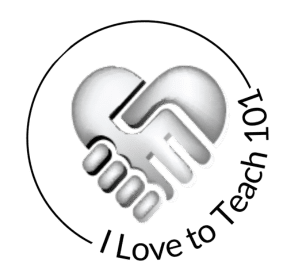How Can Watercolour Techniques Enhance Creative Thinking in Art?
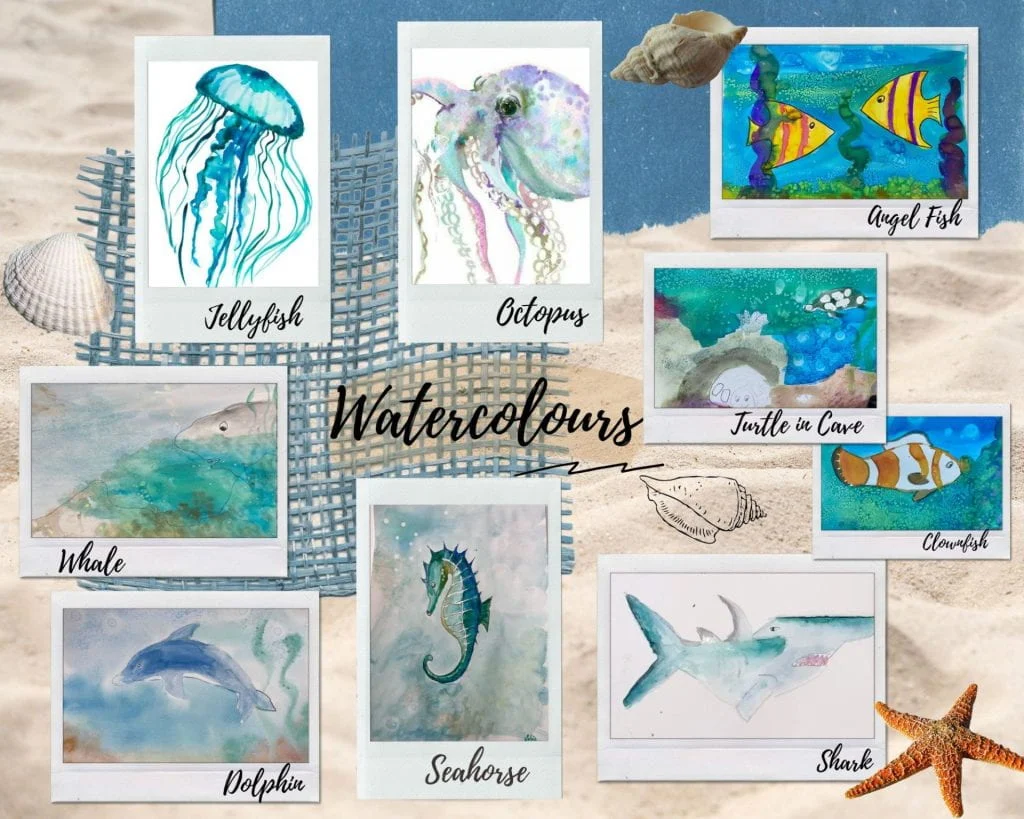
In this project on creative thinking in art, we explored environmental themes that captivate and educate learners. Last term, students looked beneath the waves, using a palette of watercolour techniques to sketch, shade, and shape their perceptions of the ocean. The highlight of the project didn’t stop there. I extended their creativity into Media Arts, where students photographed the water reflections of their paintings, adding a dynamic layer of exploration and expression.
Students also analysed the vibrant dot paintings of Uncle Tom, a First Nations artist, gaining insight into cultural storytelling and its connection to coral reefs and environmental preservation. This inspired a thoughtful integration of Aboriginal art perspectives into their work.
Finally, I used Artsonia to showcase student creations, allowing families to engage with their artistic journeys and providing a global platform for their reflections. For tips on integrating Artsonia into your classroom, check out our Artsonia Guide.
Experimenting leads to mastery and creative thinking in art
Before getting into their main projects, we kicked things off with a bit of an experimental phase. This hands-on experimentation is crucial. It moves students away from a prescriptive learning method and towards nurturing an environment where students learn through exploration and personal experience. Students don’t just follow instructions, they make informed choices that enhance their creative expressions. Here’s how I introduced these techniques, but you can do it any way you like.
Technique Demonstrations: A Visual Guide
Each group began with a demonstration of various watercolour techniques, providing a visual and practical guide. You can see these demonstrations in this short video where I walk them through the watercolour techniques.
Watercolour Techniques
Wax Resist: We use a pastel or wax crayon to create areas that repel the watercolour, preserving the whiteness of the paper.
Wet on Wet: Ideal for creating soft backgrounds or dreamy skies, this technique involves painting on a wet surface to allow colours to blend smoothly.
Texture with a Sponge: Perfect for adding detailed textures like foliage or coral by dabbing a sponge dipped in paint onto the paper.
Dry Brush: This technique is all about creating a rough, textured look, great for detailed and rugged features.
Masking With Tape: We use tape to mask off areas, keeping them free of paint for sharp lines and clean edges.
Salt on Wet: Sprinkling salt on wet paint creates a star-like or frosty effect, adding a magical texture.
Rubbing Alcohol: Dropping alcohol onto wet paint creates fascinating textures and effects, perfect for adding a touch of the unexpected.
Layered Painting: Building up colours in layers adds depth and richness to the painting, each layer enhancing the one below.
Masking Fluid: Applied to keep certain areas free from paint, this technique ensures parts of the artwork remain untouched.
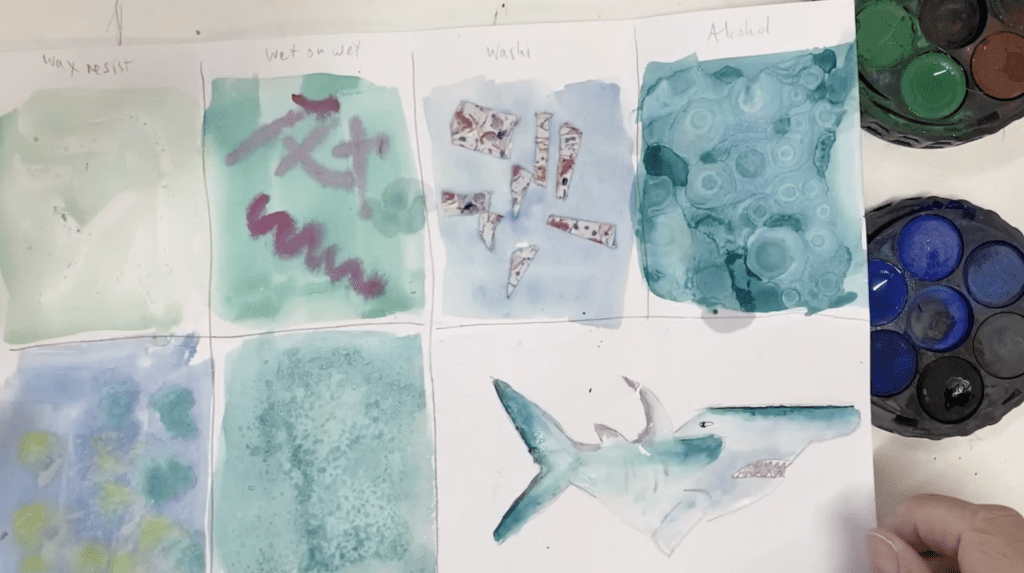
Empowering Students Through Choice and Innovation
After these exploratory sessions, students choose the techniques that resonate most with their creative intentions for their main project. This choice isn’t just about preference, it’s a critical component of creative thinking in art.
They’re encouraged to mix and match techniques to achieve effects that best express their vision of the saltwater themes they’re exploring. This fosters a deep engagement with their work and builds a strong foundation in creative problem-solving and artistic expression.
By integrating watercolour techniques with the liberty to experiment, we don’t just teach students to paint, we teach them to think creatively, to envision, and to innovate. This empowers them to go beyond the canvas, applying creative thinking to every challenge they may encounter in the future. But what I love about discovering new ways of making art in a group is that each one of us produces a different piece of art even though we are learning the same technique. I love that. Creativity is definitely personal!
Enhancing creative thinking through watercolour techniques
Why watercolour techniques? Their fluidity mirrors the aquatic world, making them the perfect medium to represent the ebb and flow of the ocean’s tides. Watercolours have got a life of their own the way they move so fast, unlike acrylics and oils. They require students to adapt, anticipate, and react. Similar to the skills needed to tackle the challenges posed by environmental issues today.
Each brushstroke can help illustrate the complexities of saltwater habitats, from the texture of coral reefs to the silkiness of a jellyfish’s glide. Through this artistic exploration, students don’t just learn about art. They learn to analyse and interpret the world around them. Making each painting an exercise in environmental advocacy and creative problem-solving.
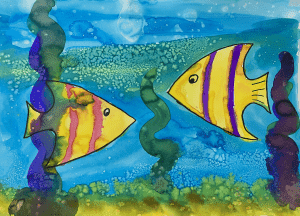
Watercolour Techniques as a teaching tool
When we bring watercolour techniques into the classroom, we’re not just dipping brushes into paint. Each technique, from wax resist to wet on wet, offers a unique way to engage with art that mimics the natural phenomena found in our seas.
For instance, using salt in watercolour paintings can create patterns that resemble the frothy, bubbly texture of sea foam, while wax resist can be used to depict the glossy bodies of sea creatures like dolphins and sharks.
A guide to implementing a watercolour project
We started by choosing which sea creature each grade would focus on. This specific approach helps tailor the lesson to the developmental stage of each class, making the watercolour techniques more relatable and effective. Here’s what we did:
Year 3: Angelfish using salt to create sparkling water effects.
Year 4: Dolphins, with wax resistance to show sleek, wet skins.
Year 5: Turtles, applying wet on wet to blend green and brown shells seamlessly.
Year 6: Sharks, using gradients to mimic the ominous depth of their marine habitat.
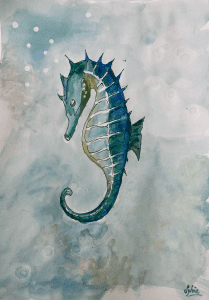

Water Reflection Photography in Media Arts
After painting we stepped into Media Arts and photographed our watercolour paintings but we added a twist. Students had to photograph the water reflection of their watercolour paintings. This is what we did:
Half-fill a black or grey tray with water
a) One person needs to hold your painting close to the water.
b) Another person holds a torch pointing to your painting.
c) Photograph the water reflection of your watercolour techniques
Photograph the water reflection of your watercolour techniques
a) Take at least 2 still photos and choose your best one
b) Gently ripple the water with your fingers
c) Take at least 2 rippled photos and choose your best one
Upload your best photograph to Artsonia
a) Load your best reflection photo of your watercolour painting to Artsonia
b) Use the Artsonia editing tools to get the best-possible-looking photo
c) Write a title and artist statement for your reflection
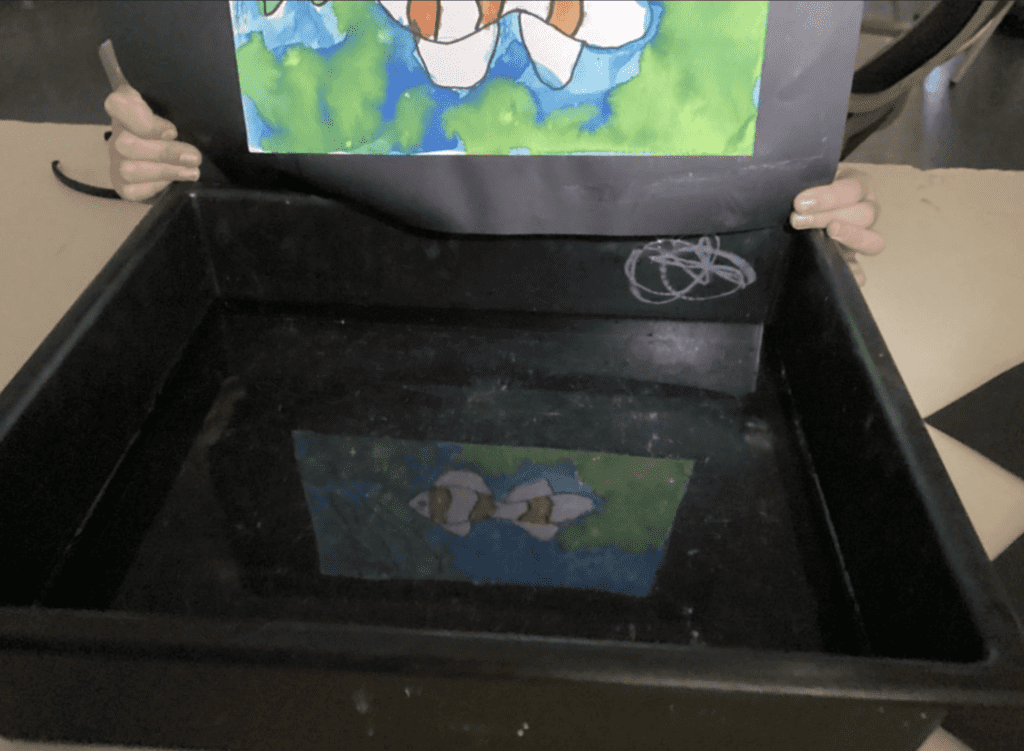
Case Study: Last Term’s Saltwater Environment Project
Last term’s focus on the saltwater environment using watercolour techniques was a splash hit! Students were not just learning how to mix paints. They were learning how to mix their observations with their imaginations.
For instance, Year 7 students explored the majesty of whales using the rubbing alcohol technique to create a mysterious, deep-water effect that echoes the whale’s natural habitat. The result was a collection of marine life paintings, highlighting the fragility of these ecosystems.
The Year 10s tackled the intricate art of painting seahorses. This wasn’t just about following a template. It was about challenging each student to think critically about where to add texture, depth, and detail. Using a combination of watercolour techniques like masking fluid, layers of paint, salt, and rubbing alcohol, students crafted vibrant, textured seahorse paintings.
Linking Art with Environmental Education
Using watercolour techniques to teach about saltwater environments raises awareness. Each brushstroke is a conversation starter about marine conservation, the impacts of pollution, or the effects of climate change on marine biodiversity. As educators, our goal is to weave these discussions naturally into our lessons, making the connection between art and real-world issues clear and compelling for our students.
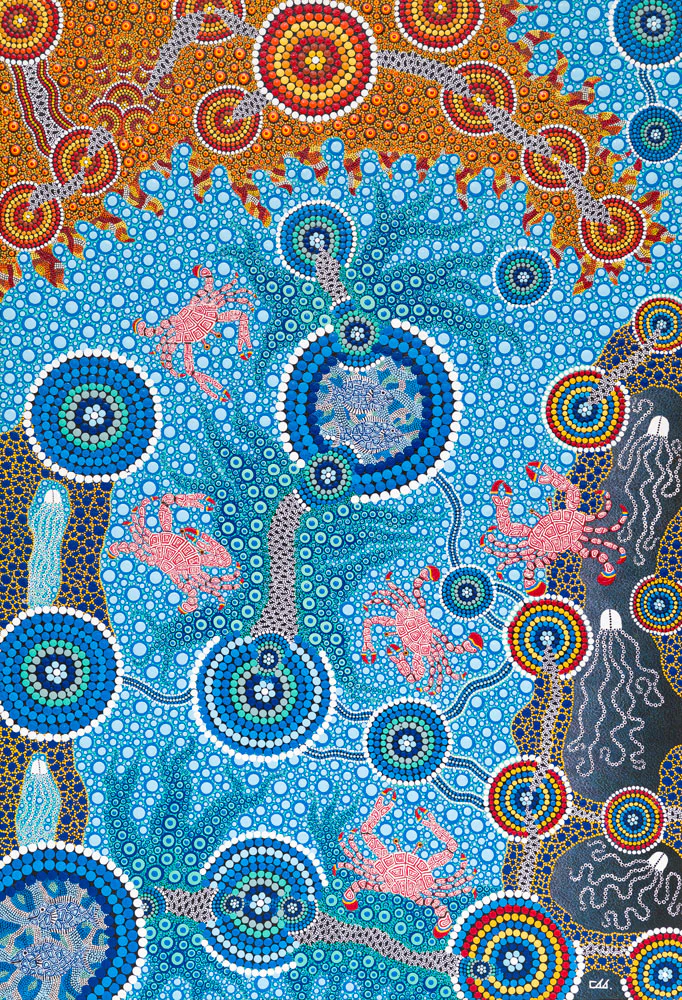
‘Reef Magic’ by Uncle Tom
Art Analysis: Integrating Cultural Perspectives
I also had students explore Dot paintings of the Ocean reef by Uncle Tom, an incredible First Nation artist. His vibrant depictions of coral reefs just captivate the senses. Students immersed themselves in it, by reading the stories he tells through his paintings and even tackling quiz questions that pushed them to think deeper about the art and what it represents.
Analysing Uncle Tom’s work is a critical exploration where students respectfully describe his artworks, unpacking the rich cultural narratives and ecological messages embedded within them. This isn’t merely about appreciating art for its beauty. It’s about understanding its significance in conveying First Nation perspectives on nature and conservation.
This analysis is a powerful way to blend cultural education with environmental stewardship. It teaches students not just to look but to see, not just to listen but to hear, the stories and struggles, the beauty and urgency of preserving our magnificent planet. This blend of art and cultural insight enriches students learning.
Unleashing the True Power of Art
By integrating watercolour techniques or any other skills into our lessons, we’re not just teaching students to paint. We’re helping them think creatively, adapt, and innovate—skills that resonate far beyond the classroom walls.
The Media Arts water reflection photography brought an extra layer of exploration, encouraging students to see their work in new and unexpected ways. Analysing the dot paintings of Uncle Tom deepened students’ understanding of cultural storytelling and its connection to environmental themes, enriching their appreciation for Aboriginal art and perspectives.
Sharing their creations through Artsonia allowed families to celebrate these achievements while helping students see their work as part of a broader global narrative. This cross-disciplinary approach reinforced the idea that creativity is limitless, empowering students to experiment, express, and excel in their artistic journeys.
